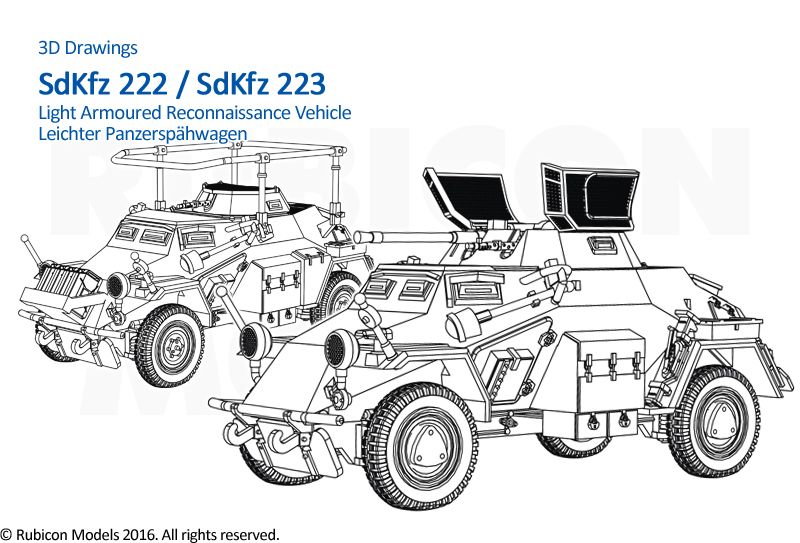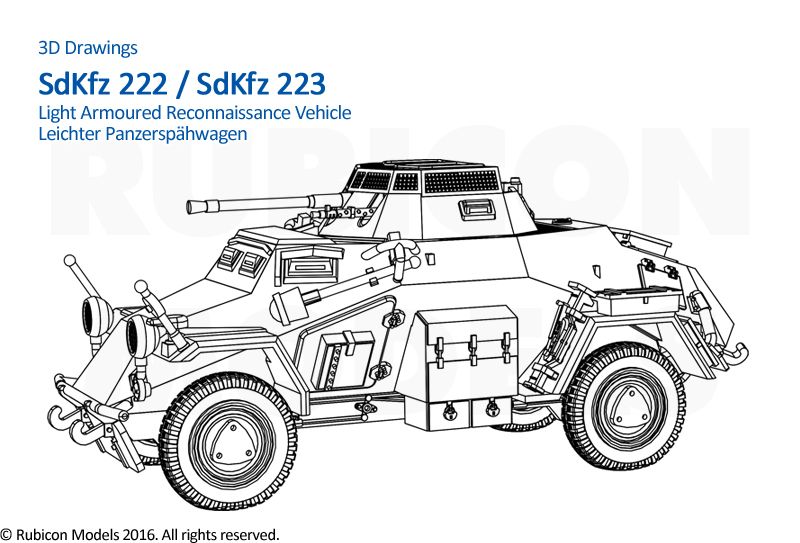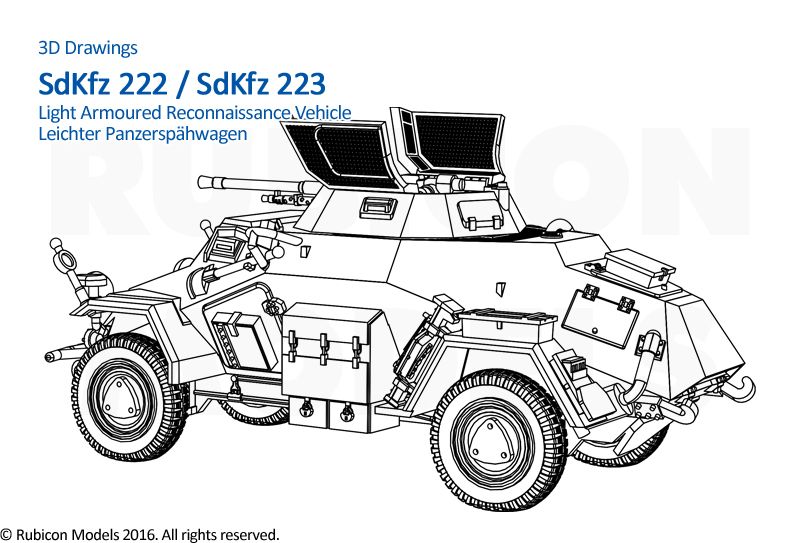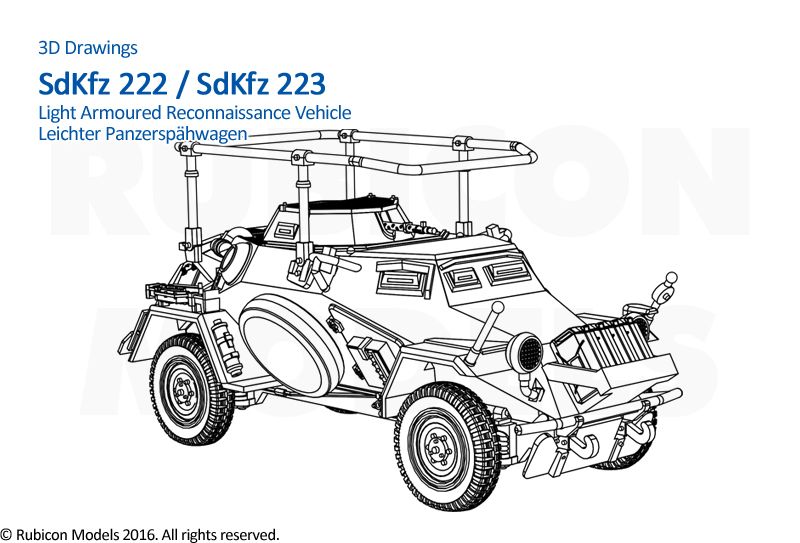The long wait is over! Introducing the
SdKfz 222/223/260/261 project...
The
Leichter Panzerspähwagen (German: roughly "light armoured reconnaissance vehicle") was a series of light four-wheel drive armoured cars produced by Nazi Germany from 1935 to 1944.
Designed to meet operational requirements including reliability, run on a variety of grades of fuel, simple construction and good off-road performance the first such vehicle was the SdKfz 221 but this proved too small and too lightly armed, so in 1936-37 a heavier version was planned, using one of two standard chassis for four-wheel armoured cars, one with a front-mounted engine, the other rear mounted version, was used in the SdKfz 222, which became the standard light armoured car in German army service until the defeat of Nazi Germany.
SdKfz 222This version of the vehicle was armed with a 2cm KwK 30 L/55 autocannon and a 7.92mm MG13 machine gun. The crew was increased to three by the addition of a gunner, relieving the commander of that task. In 1938, the MG13 was replaced by a Maschinengewehr 34, in 1942 the KwK30 was replaced by the faster firing KwK38 of the same calibre. Production ran from 1937 to late 1943, with at least
990 vehicles being produced for the army. Its full name was
Leichter Panzerspähwagen (2cm).
SdKfz 223An armoured car with similar features to the SdKfz 221, but with the addition of a frame antenna and a 30-watt FuG10 medium-range radio set. Later versions of the vehicle were equipped with an improved 80-watt FuG12 radio set. It was originally armed with a 7.92mm MG13 machine gun, but in 1938 this was changed to a Maschinengewehr 34. The crew was increased to three by the addition of a radio operator. Production ran from 1936 to January 1944, with at least
567 vehicles being produced for the army. Its full name was
Leichter Panzerspähwagen (Fu).
Kleiner Panzerfunkwagen SdKfz 260/261Unarmed radio car versions with long range radio equipment and a large "bed-frame" antenna over the vehicle. Generally used for signals use, three were used as armoured cars in Finland. The SdKfz 260 was equipped with radio sets to communicate with aircraft, the SdKfz 261 with radio sets to communicate with other Heer units. By 1 September 1940, the manufacturers had orders for
36 SdKfz 260 and
289 SdKfz 261. Production ran from April 1941 to April 1943, with
483 vehicles of both types being produced.
Proposed Features:• Four build options to either assemble as a SdKfz 222 / SdKfz 223 / SdKfz 260 / SdKfz 261
• Choice of road wheel rims
• Interior details around the turret area included
• Full detail cannon
• Open or closed turret mesh (wire mesh anti-grenade screens)
• Bedframe antenna
• Optional stowage
• One gun crew
• All new decal sheet
• Assembly instruction








Enjoy!
